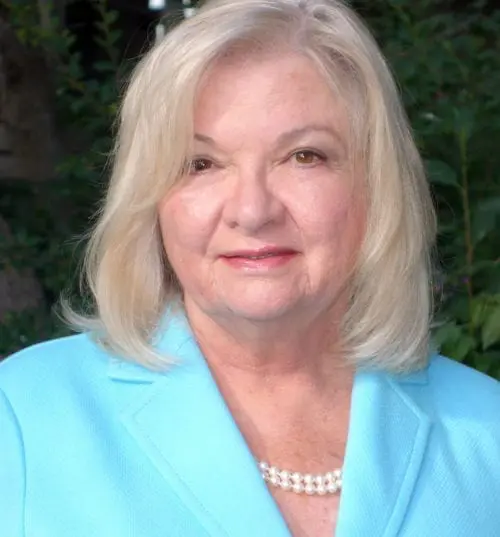When you first walk into the KB Home ProjeKt concept house in Las Vegas, Nevada, what’s most remarkable about the layout is how the foyer seamlessly leads into the combined kitchen, dining area and great room that overlook the outdoor space. It’s not until you sit down and settle in that you realize how comfortable the whole space feels and how you really don’t want to leave.
At least, that was my reaction when I visited this concept house orchestrated by KB Home, Hanley Wood media company, KTGY Architects and Delos, a tech and wellness company.
Having already written about the KB Home ProjeKt for New Home Source, I was aware of innovations like a floorplan that could be adapted to the homeowner’s needs and lifestyle and integrated smart technology and wellness features, including a system designed by Delos to actively monitor and remediate air quality. Still, I didn’t expect to experience such a strong sense of comfort, although the snow falling outside, a rarity for Las Vegas, did enhance this feeling.
What’s most interesting is that none of the tech or wellness features are obvious when you enter the home. “You really didn’t notice those features because that was the point,” says Craig LeMessurier, senior director of communications, KB Home. “We wanted the home to be comfortable, but we wanted it to look like other KB homes. Those technologies are not necessarily in your face, but at the same time they are helping you live more comfortably with a healthier lifestyle.”
Turning Concept Into Reality
Concept homes have become an expectation at industry events such as the Consumer Electronics Show (CES) and the International Builders’ Show (IBS). In recent years, these concept homes have addressed issues like multigenerational living and sustainability (Renewable Living House 2018 and Responsive Home 2016). LeMessurier says projects like the KB Home ProjeKt house are “an incubator, really a research and development platform for us, where we test products and look to see the consumers’ reaction.”
The idea, he says, is to take these concepts and eventually put them into real homes that people can buy. In late spring 2019, KB Home debuted the inclusion of smart home and personal wellness technologies in its Genoa at Orchard Hills community in Irvine, California. Delos’ DARWIN Home Wellness Intelligence Network is an upgrade, but each home integrates KB Home’s proprietary smart home system. Other options include a Tesla Powerwall energy storage and management system.
Flexibility for Different Lifestyles
While technology, wellness and amenities, such as a lighting system synced with circadian rhythms, have generated the most media attention about this house, other features are equally, if not more, innovative. Consider a wall to the side of the kitchen, housing a beverage center and cabinets, that can be moved at the touch of a switch to expand the space for entertaining. Movable walls can already been seen in some New York condos and townhomes, but they are not typically something demonstrated for production homes.
Part of the vision for movable walls was a home that could be useful for a range of ages. “The hope was that we could design a house that would work for the starter family, but could be owned by them and used by them all the way through to when they might need some assistance or help,” explains Manny Gonzales, FAIA, a principal with KTGY Architects.
The second floor of the KB Home ProjeKt house was much larger than expected with a spacious main living area and galley kitchen, as well as a bedroom, bath and laundry. The space is well-thought-out, with extensive windows that bring in plenty of natural light and a deck that connects the indoors to the outdoors. I could see this working for a range of living options including for adult children and teenagers.
The second floor also included a separate outside access, and it’s easy to see how well this would work for as an income-generating unit or even as an office or workspace for owners. The concept guiding this section of the home and the fit and finishes correspond with changing consumer expectations. Jacob Atalla, vice president sustainability initiatives, KB Home, points to societal trends and expectations that the sharing economy will continue to grow. “Families are also not the same structure they used to be,” he adds, noting that the new consumer is “very healthy and wants to stay healthy throughout their lives.”
Throughout CES and IBS, consumers and industry folk who toured the concept house were all enamored with what was on display. “Never before had we or other builders introduced this type of health and wellness technology,” Atalla says.
Wellness may seem to have burst onto the real estate scene this year, but concern over the relationship between the built environment and wellness was piqued more than 20 years ago with health issues related to toxic mold. The result was greater focus in the industry on materials and building practices. The ProjeKt house takes that concern to the next level. How the industry will respond remains to be seen, but KB has clearly taken the next step.

Camilla McLaughlin is an award-winning writer specializing in house and home. Her work has appeared in leading online and print publications, such as Yahoo! Real Estate, Unique Homes magazine and Realtor magazine. She has also freelanced for the Associated Press.
 ‘Wow Factors’ Delight Buyers of Newly-Built Homes
‘Wow Factors’ Delight Buyers of Newly-Built Homes